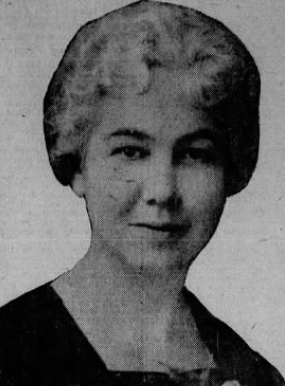Cora Reynolds Anderson facts for kids
Quick facts for kids
Cora Reynolds Anderson
|
|
|---|---|
 |
|
| Member of the Michigan House of Representatives from the Iron district | |
| In office November 4, 1924 – January 7, 1925 |
|
| Preceded by | Patrick H. O'Brien |
| Succeeded by | William C. Birk |
| Personal details | |
| Born | April 10, 1882 L'Anse, Michigan, U.S. |
| Died | April 11, 1950 (aged 68) Pentland Township, Michigan, U.S. |
| Political party | Republican |
| Spouse | Charles Harold Anderson |
Cora Reynolds Anderson (born April 10, 1882 – died March 11, 1950) was an important American politician. She made history by becoming the first woman and the first Native American person to be elected to the Michigan House of Representatives. This is a part of the government that makes laws for the state of Michigan. She was a member of the Republican Party.
Contents
Early Life and Family
Cora Reynolds Anderson was born on April 10, 1882. Her hometown was L'Anse, Michigan. Her parents were Robert B. Reynolds and Madeline Bachand. Cora had a mixed background. She was of English, French, and Chippewa descent. She was very proud to be part of the first group of students to graduate from L'Anse High School. In 1903, she married Charles Harold Anderson.
Serving in the Michigan House of Representatives
Becoming a State Representative
In 1924, Cora Reynolds Anderson decided to run for a political office. She won the nomination from the Republican Party in her area, called the Iron district. This meant her party chose her to be their candidate. She then won the main election without anyone running against her. She took over the position from Patrick H. O'Brien.
On November 4, 1924, Cora Anderson officially started her job. She was the first woman and the first Native American to serve in the Michigan House of Representatives. This was a big step forward for women and Native Americans in politics.
Trying for Reelection
On April 28, 1926, Cora Anderson announced she wanted to run for reelection. She spoke at a meeting of Republican women's clubs. She encouraged other women to also run for political jobs. On July 28, she officially applied to be the Republican candidate again.
However, she lost in the primary election. This is an election where party members choose their candidate. William C. Birk won instead. No other women were chosen by the Republican Party to run in 1926. Birk won the general election. Cora Anderson finished her term on January 7, 1925.
Her Work in Office
During her time in the Michigan House of Representatives, Cora Anderson worked on important issues. In 1925, the Speaker of the House, Fred B. Wells, gave her a special job. She became the leader of a committee. This committee focused on the industrial school for girls in Adrian, Michigan.
From 1925 to 1926, she also served on other committees. These included committees for Agriculture, Insurance, and the Northern State Normal School.
Cora Anderson was also active outside of her official duties. On September 9, 1925, she was chosen as vice president of the Republican Women's Federation of Michigan. From January 5 to 6, 1926, she was a delegate for Michigan. A delegate is someone chosen to represent a group. She was one of the first women to be a delegate at the Great Lakes-St. Lawrence tidewater congress.
Later Life and Honors
Cora Reynolds Anderson passed away on March 11, 1950. She died in Pentland Township, Michigan.
Her contributions to Michigan were remembered years later. On December 19, 2000, a building was named after her. It is called the Anderson House Office Building. In 2001, she was honored again. She was added to the Michigan Women's Hall of Fame. This recognizes women who have made a big difference in Michigan.
See also
 In Spanish: Cora Reynolds Anderson para niños
In Spanish: Cora Reynolds Anderson para niños

